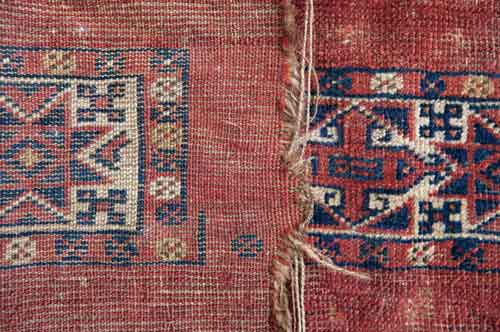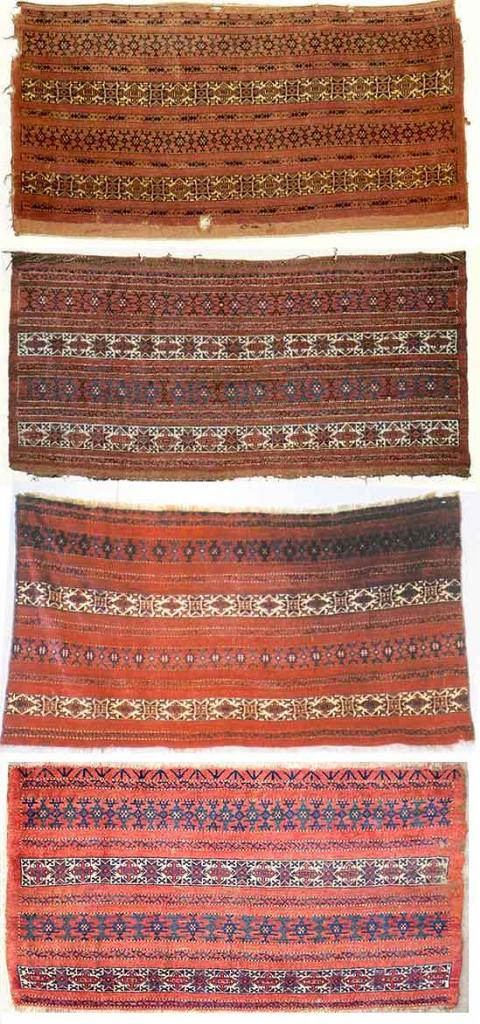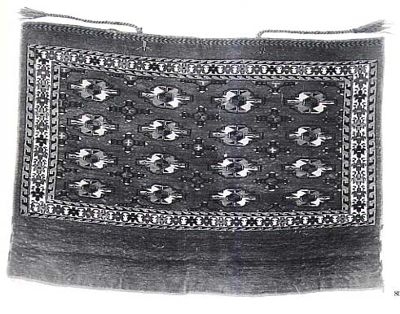| Martin Andersen | 1 April 11th, 2013 03:25 AM |
Large Chuval/sleeping rug, Kirghiz
(?)
Hi All
While we are at the striped turkmen formats, here a large chuval/sleeping rug(?) 100 x 215 cm.

This specific rug type is generally attributed to the Kirghiz, an attribution which goes back to at least S.M. Dudin. An attribution which has always kind of seemed strange to me when aesthetically comparing to other Kirghiz material.
But when looking closer to the weave, which is very soft, uneven and open compared to the MAD pieces I have, I can see that it differs.

This piece also shows a number of peculiar fillings I haven't seen before:

The weave is very soft with an uneven kpsi around 90


The very large size to me seems way to large for chuval function as a bag, whether or not "sleeping rug" is more correct (its a suggestion from Hans Elmby) I don't know, but in this beautiful photo from Bukhara around 1900 the rug type is simple used as a rug for sitting on.

Best
Martin
While we are at the striped turkmen formats, here a large chuval/sleeping rug(?) 100 x 215 cm.

This specific rug type is generally attributed to the Kirghiz, an attribution which goes back to at least S.M. Dudin. An attribution which has always kind of seemed strange to me when aesthetically comparing to other Kirghiz material.
But when looking closer to the weave, which is very soft, uneven and open compared to the MAD pieces I have, I can see that it differs.

This piece also shows a number of peculiar fillings I haven't seen before:

The weave is very soft with an uneven kpsi around 90


The very large size to me seems way to large for chuval function as a bag, whether or not "sleeping rug" is more correct (its a suggestion from Hans Elmby) I don't know, but in this beautiful photo from Bukhara around 1900 the rug type is simple used as a rug for sitting on.

Best
Martin







































